 We are using pH 4662 test strips to find the acid in our fruit wines. We got the test strips from a wine making shop, The salesman said they were for acid but they say pH is this what we are supposed to have or is there a conversion to find the correct acid levels?
We are using pH 4662 test strips to find the acid in our fruit wines. We got the test strips from a wine making shop, The salesman said they were for acid but they say pH is this what we are supposed to have or is there a conversion to find the correct acid levels?
Name: Gene P.
State: PA
—–
Hello Gene,
I would like to thank you for such a great question. Wine acidity and pH is a subject that confuses many home winemakers. And to make matters worse, it becomes even more head-spinning when you start throwing in terms like titration or titratable acidity. Let me see if I can break this down into language that is easier to understand.
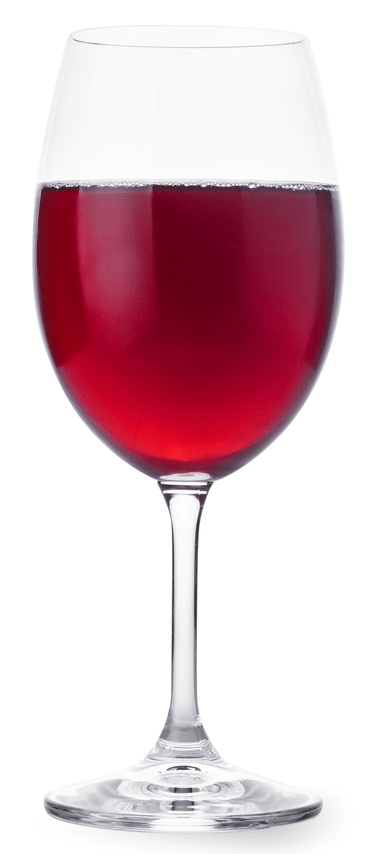 First Of All, What Is Acid?
First Of All, What Is Acid?
In the context of wine making, it is the stuff that makes your wine more tart or sharp tasting. Not enough of it, and your wine will be flat, lifeless, and in extreme cases, insipid. It’s also the stuff that helps your wine to be more stable. This means: less likely to be overcome by mold, bacteria, or oxidation. It even contributes to how brilliant your wine’s color will be. To sum it up, acid is an integral part of any wine.
pH Readings vs. Titratable Acids
Gene, to speak to your suspicions directly, there are two ways by which you can measure acidity in a wine: by pH and by titration.
pH READINGS:
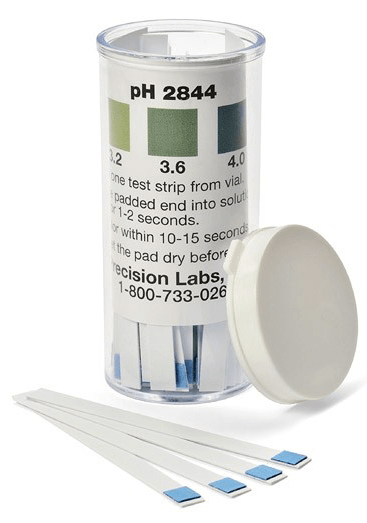 A pH reading will be numbers like 3.9 or 4.4. There are two things to know about these numbers. First, they run backwards. That is to say that 3.0 is higher in acid then a 4.0. Secondly, the scale is not an even one. It is logarithmic by a factor of -10, which is a fancy way of saying that a wine that has a pH of 3.0 has 10 times as much acid as a wine with a pH reading of 4.0. Remember it goes backwards. For most wines you are looking for a pH reading of 3.4 to 4.0, with the sweet-spot being around 3.6.
A pH reading will be numbers like 3.9 or 4.4. There are two things to know about these numbers. First, they run backwards. That is to say that 3.0 is higher in acid then a 4.0. Secondly, the scale is not an even one. It is logarithmic by a factor of -10, which is a fancy way of saying that a wine that has a pH of 3.0 has 10 times as much acid as a wine with a pH reading of 4.0. Remember it goes backwards. For most wines you are looking for a pH reading of 3.4 to 4.0, with the sweet-spot being around 3.6.
A pH reading can be taken with pH strip, such as the ones you have purchased, or with a digital pH meter. In either case the readings are almost instant. Just put a drop of wine on the end of a pH strip and allow it to dry. You then match the color change of the pH strip to a color chart to determine the wine’s pH. With the digital pH meter it’s just a matter of putting the meter’s probe directly into the wine and wait for a reading. Not much harder than taking a temperature.
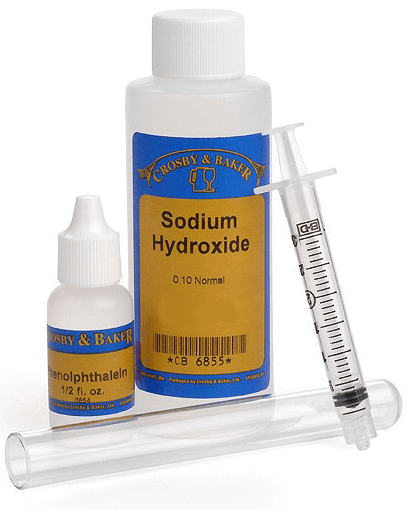 TITRATION READINGS:
TITRATION READINGS:
A titration reading is a little more straight forward. It gives you a reading as a percentage of the wine. Optimal readings can very from one style of wine to the next, but essentially you want to be somewhere around. .55% and .75%.
Titratable acidity is measured with an acid test kit (titration kit). In simple terms, when using an acid test kit you are adding a solution to a wine sample until it changes color. You get your acid percentage reading by measuring how much of the solution it took to change the wine’s color.
The Different Between pH And Titratable Acidity In Wine
While both methods measure acid, each are measuring it in a very different way, so much so, that one scale can not be converted or correlated to the other. This is where much of the confusion lies between pH and titratable acidity.
As an example, if you have a pH reading of 3.6, it can not be correlated to any corresponding titration reading and vice versa. To carry this further, you can even have two wines with the same exact pH reading but with different titration readings. That’s how loosely correlated they are.
 CONFUSED YET?
CONFUSED YET?
I’ll try to explain the difference as simply and plainly as possible. That’s my promise. But in order to do that I may take one or two technical liberties as a way to keep things simple. I only say this because I know there will be some people out there that will want to correct me on some of these explanations.
NOT ALL ACIDS ARE THE SAME
There are many different kinds of acids that can be found naturally in a wine. Each are made up just a little differently. The common ones are: tartaric, citric, malic, lactic, ascorbic and succinic, along with many others in smaller amounts. The important thing to understand is that each one of these acids has a different strength of tartness on the tongue. Some acids are very sharp, while others, not so much at all.
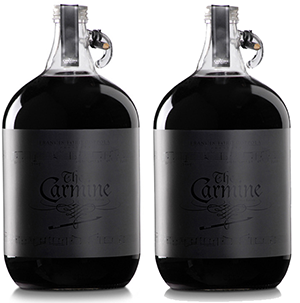 As an example, you can take two one gallon jugs of wine that are identical and add to one of them a 1/4 ounce of ascorbic acid and to the other, 1/4 ounce of malic acid and get two completely different levels of tartness in each case. While the amount of acid added to each gallon was the same, the resulting level of tartness was different. This is because different acids have different strengths.
As an example, you can take two one gallon jugs of wine that are identical and add to one of them a 1/4 ounce of ascorbic acid and to the other, 1/4 ounce of malic acid and get two completely different levels of tartness in each case. While the amount of acid added to each gallon was the same, the resulting level of tartness was different. This is because different acids have different strengths.
TO THE HEART OF THE MATTER
Now that you understand that not all acids are the same, I can explain to you the difference between pH and titratable acid.
pH represents how much acid is in a wine
regardless of how strong it tastes,
whereas a titration measures
how strong that acid tastes.
In other words, pH doesn’t concern itself with how taste-able the acid is. It only cares that it is in the wine. Whereas, a titration reading does not care about how much acid is in the wine. It only cares about how tart it is making the wine.
WHY DON’T WE FORGET ABOUT THE pH?
After reading this you may be wondering why we are even interested in a pH reading at all. I mean, if you have a way of measuring the acidic taste or tartness of the wine by way of performing a titration, why would you even care about a pH reading? What’s more important than taste? This is a very good question, but there is also a very good answer!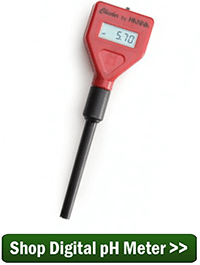
While acids do bring a tartness to the wine that is necessary for a wine to taste proper, acid also does the other things mentioned earlier for the wine. It helps to protect the wine from spoilage and oxidation, and it keeps the wine’s color fresh and brilliant.
This is where pH becomes important. pH is more directly related to how well the wine is being protected. While some acids do not do so much for tartness, they may be going a long way toward protecting the wine. This is why it is always important to make sure the pH is in the correct range.
IN REALITY…
A wine that has a proper range of pH will usually result in a wine that also has an acceptable level of tartness. The opposite usually holds true as well. A wine that has a proper level of tartness will likely have an acceptable pH reading. But, this is not a given! You can’t always assume this will be the case. For some wines getting the acidity levels correct can be a challenge.
So, Where Does This Leave Us
To make sure your wine is in good balance, you will want to adjust the wine’s acidity according to both pH and titratable acid. This may seem like a process that is destined to end in conflict, but what you will usually find is that both readings will be telling you to do the same thing — to either raise the acid or lower the acid. Then when you get both readings to an acceptable range, a little compromise may need to take place.
All the information above about the difference between pH and titratable acidity in wine and adjusting the acid only applies when making wine from fresh fruit, whether it be strawberries or grapes. If you are using wine concentrates or wine ingredient kits to make wine, you do not need to worry about any of this. Everything has been balanced and tested ahead of time for you.
Gene, best wishes and happy wine making,
Ed Kraus
—–
Ed Kraus is a 3rd generation home brewer/winemaker and has been an owner of E. C. Kraus since 1999. He has been helping individuals make better wine and beer for over 25 years.


Question.
I’m going to try to make sweet desert wine in the style of Sauterne. How sweet should it be and what is the best way to measure. What should the PH be and you have just told Gene how to measureit
David, the sweetness of Sauternes do vary. They can be only noticeably sweet and they can can be Kool-Aid sweet. I would suggest that the wine be sweetened with balance being kept in mind. These wines have a fruit tartness that should be evenly matched with sweetness. Remember the sweetening can be done to taste before bottling. As for the pH. These wines have a firm structure to them. I would suggest that you shoot for a pH of 3.4. The titratable acidity should be about .75%. Also, these wines are known for there higher alcohol levels. I would shoot for 14%. Hope this helps you out.
It is nice explanations. May God bless you all
Do you use the same methods to change ph and titratable acid.
Dave, what you use to raise or lower the acid is the same. However,how to achieve the appropriate level varies a little. The following article will discuss raising and lowering the acid using pH or titration testing.
Getting A Handle On Wine Acidity
http://www.eckraus.com/wine-making-acidity
A very well made explanation about the difference between the two acid measuring methods. Now, to add a bit to the confusion about acid levels. I have an acid tester that reads digitally but in P/M or parts per million. Is there an easy way to convert pm to Ph.I am currently making a Kit wine of Merlo which is still in the primary fermentor for the third day.The reading is 0644 pm which I assume would be the equivalent to a Ph of about 3.6.Am I close in my assumption.
At the moment the wine is fermenting at a high rate. Would this reading change considerably once fermentation slows to a level where it will get transferred to the carboys?
I like your comments and explanations very and never fail to read them. Thanks for the good work you do.
Gery, you do not want to test for acidity while there is CO2 from the fermentation still in the wine. Doing so will throw your reading off. The most convenient times for this is before the fermentation takes place, or before bottling the wine. It is important to de-gas the wine because some residual CO2 will stay saturated into the wine until it is persuaded to leave. In regards to converting ppm to pH, it is a very complicated math equation and you would need to know the ph of each acid in the wine.
Hi Ed
I am from cental India, an amature home wine maker and make red wine from local grapes in 80 litre batches using red star premier cuvee sachets . I have been a keen follower and Loved your blog about Ph and Total acidity. Very nicely explained. Will be in touch .Cheers
Hello Ed,
Mostly you see TAE measured or Tartaric acid equivalents. Why would someone want to use or convert this to say SAE or Sulfuric acid equivalents. Just seeking to understand.
Andrew.
Andrew, there is not any rhyme or reason to which some traditionally rely on in other parts. The US matches acidity to tartaric which is the most accurate. Our acid test kit tests in tartaric.
I’ve been having a pretty consistent acid issue with the wines I make. The majority of my fruit wines have been experiencing a large PH drop (acid spike) after fermentation. For example, a batch of Blueberry/Canary Melon must had a PH of 4.13 before primary fermentation. Fermentation alone dropped the PH all the way to 2.92. The same just happened to a batch of Strawberry, the must was 4.00 PH and fermentation dropped the PH to 2.94. I’ve tracked every batch of fruit wine that I’ve made, 14 in total over 2 years, and every batch of wine has had this happen. They all seem to drop from ~0.50 to 1.10 on the PH scale from must to bottling with no additional Acid Blend being added. Any ideas on what could be causing this to happen so consistently?
The yeast I use is Lalvin brand, usually K1-V1116 or EC-1118. PH meter is a Apera Instruments AI311, calibrated regularly. When I do use Acid Blend, it’s the brand from this website.
On a side note, one of the best wines I’ve made so far was a Blackberry wine made from local berries here in Costa Rica which had a PH of 2.88 at bottling. It needed quite a bit of back sugaring to offset the tartness, but it turned out excellent.
What usually causes this is excessive production of succinic acid during the fermentation. All fermentations will produce some succinic acid. This is normal. But sometimes succinic acid production can get out of control. Here is an article I found that may help you out a little. I would suggest reading the whole article, but in the body of the article you will find reasons for excessive succinic production. Hopefully, this will give you some things to try to help limit the production of this acid.
The Occurrence Of Succinic Acid In Wine
https://www.wineland.co.za/the-occurrence-of-succinic-acid-in-wines/
Can you use the same acidity kit to measure TA for wine in a sour beer? I see Hanna TA testers for beer… significantly more expensive!